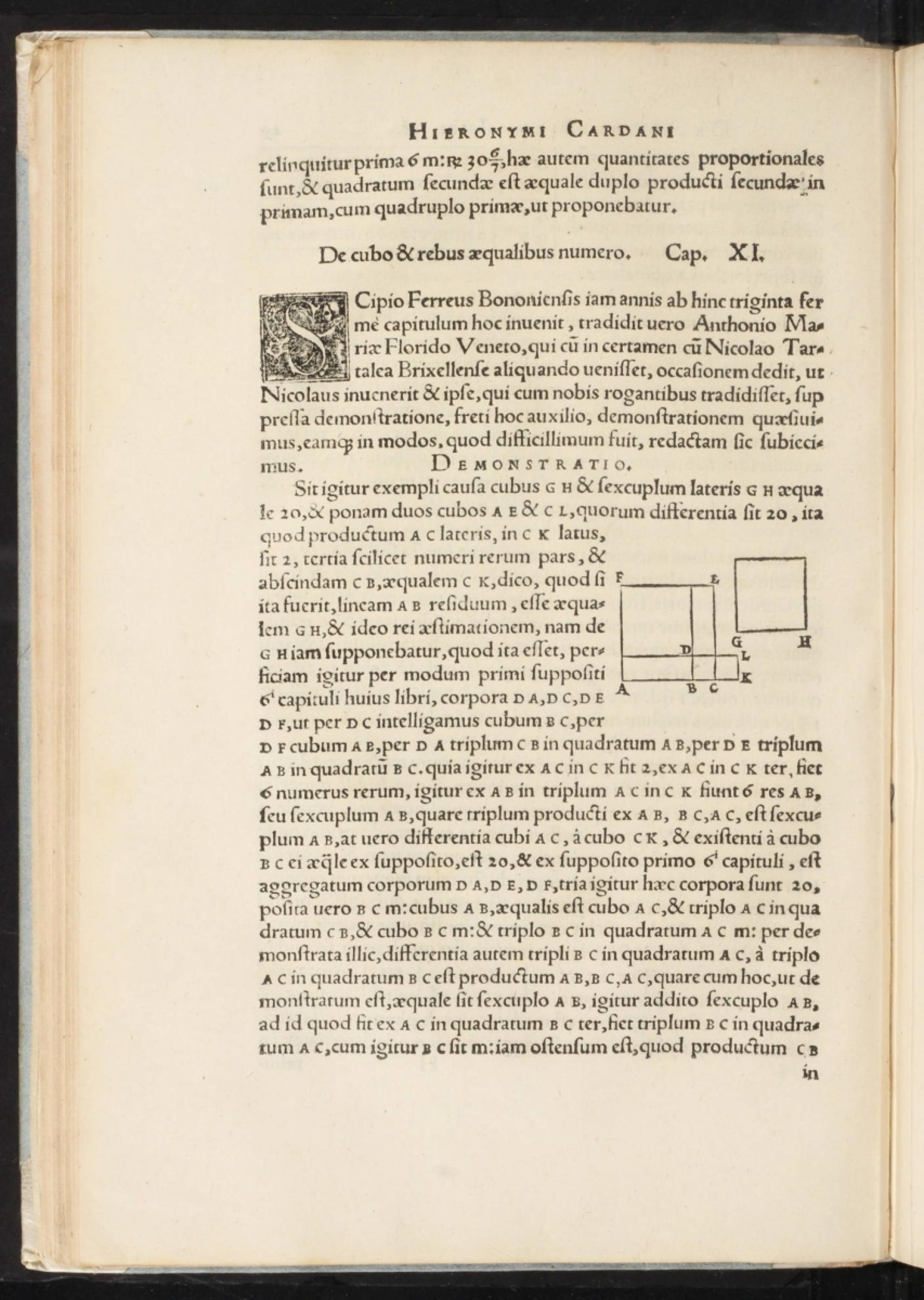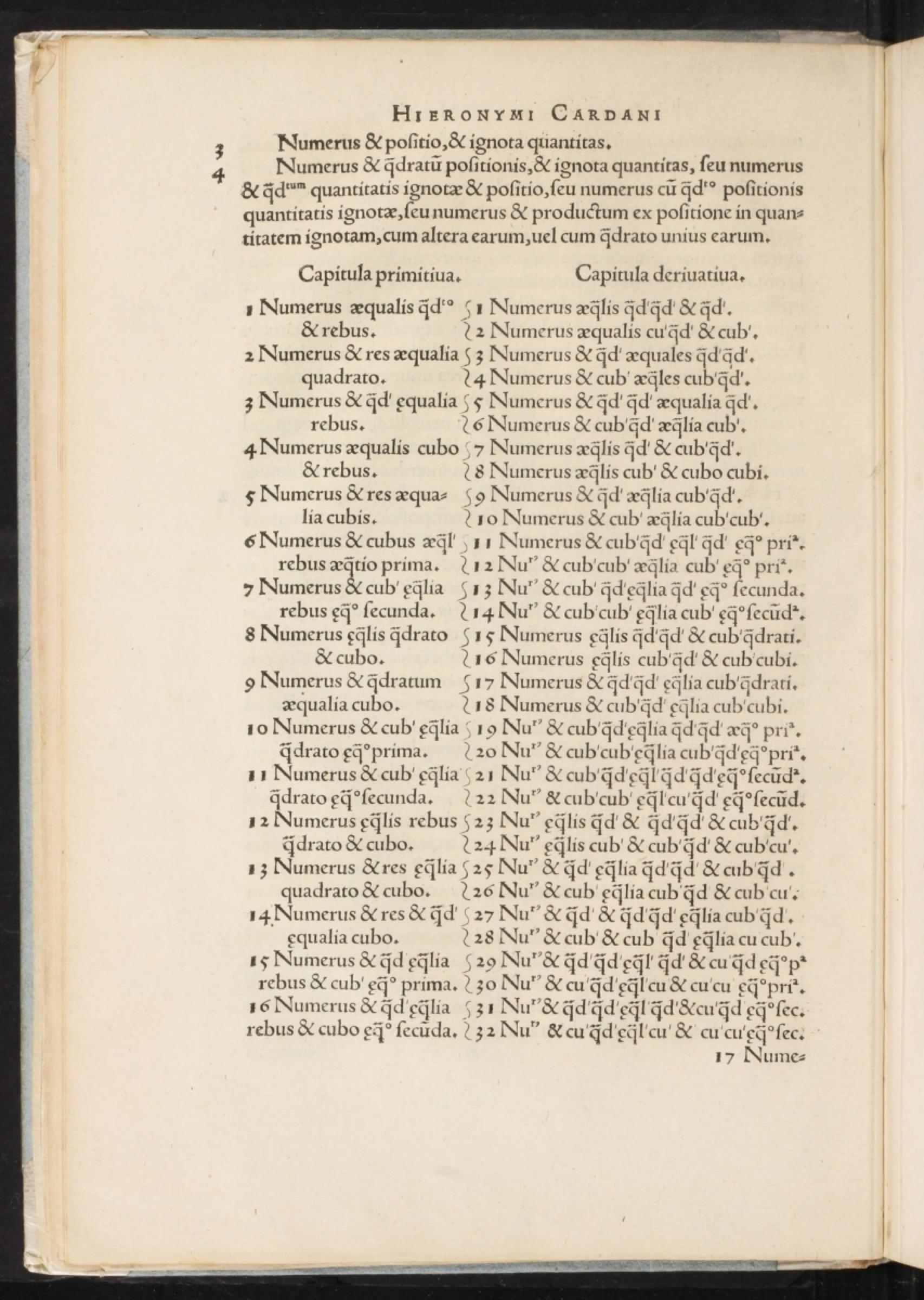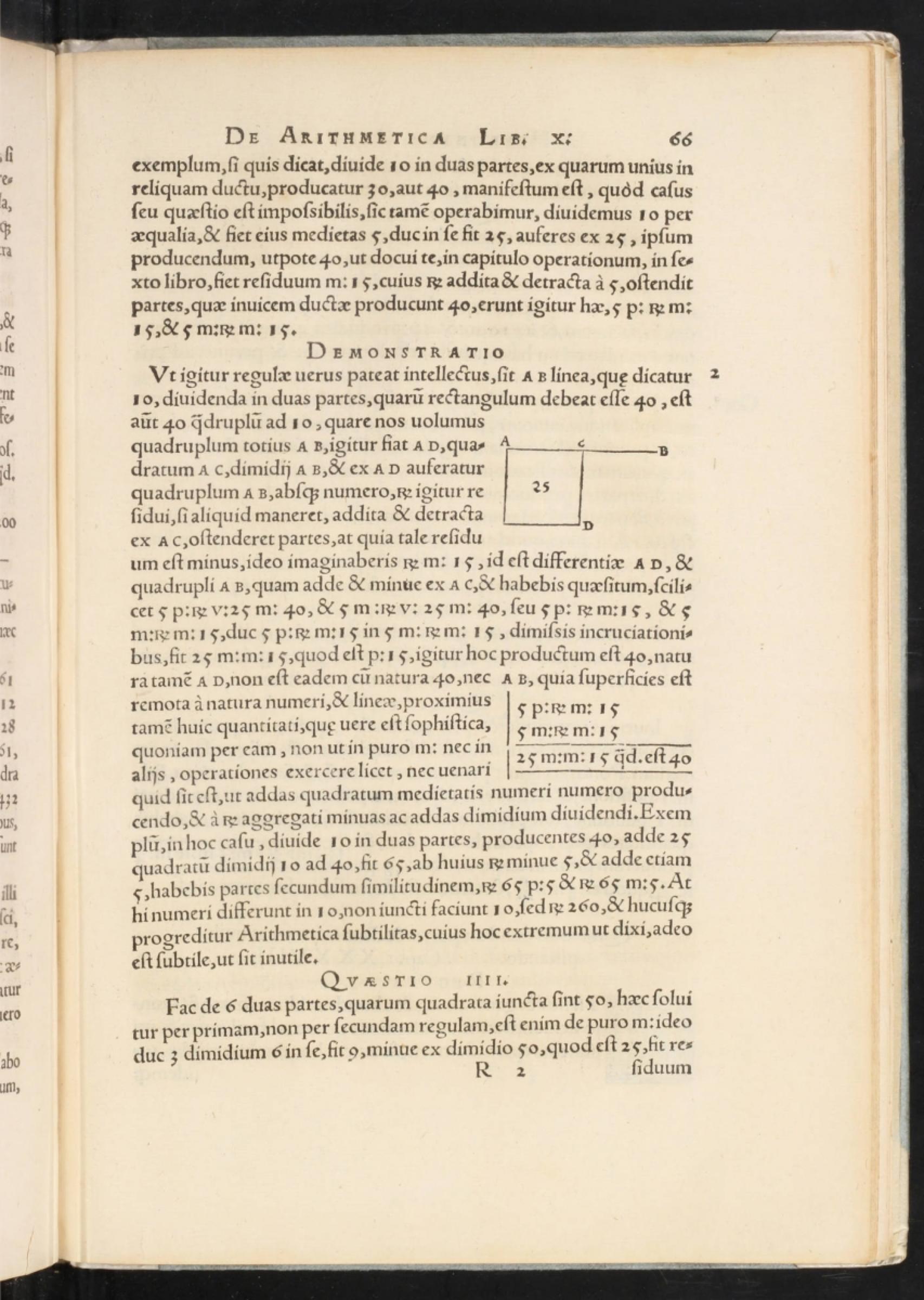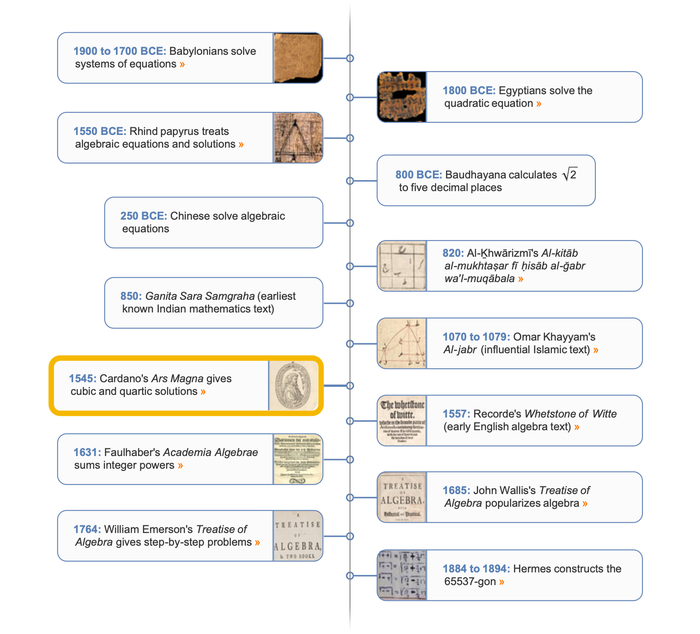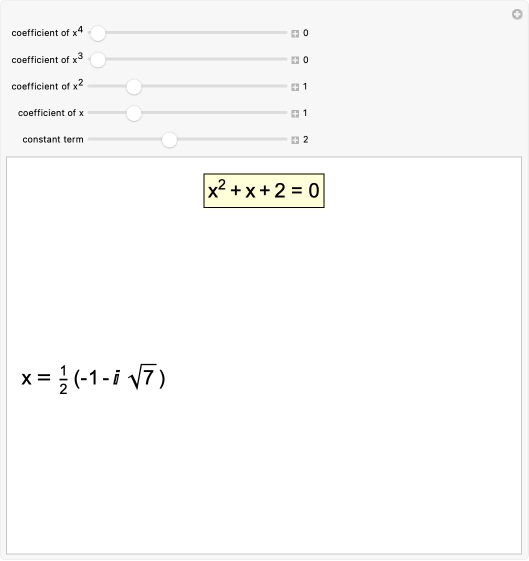1545
Cardano's Ars Magna
Algebraic solutions to cubic and quartic equations
Gerolamo Cardano's Ars Magna (The Great Art) was first published in Nuremberg, Germany, in 1545. It is considered one of the outstanding scientific treatises of the early Renaissance.

While solutions to cubic equation had been discovered by Niccolò Tartaglia in 1535 and by Scipione del Ferro previously, neither result had been published. In Ars Magna, Cardano first published algebraic solutions not only to the cubic but also to the quartic equation, crediting del Ferro as the first to solve the cubic equation and stating that the solution presented used del Ferro's method. The forty chapters of Ars Magna also introduced the concepts of multiple roots and complex numbers for the first time.
